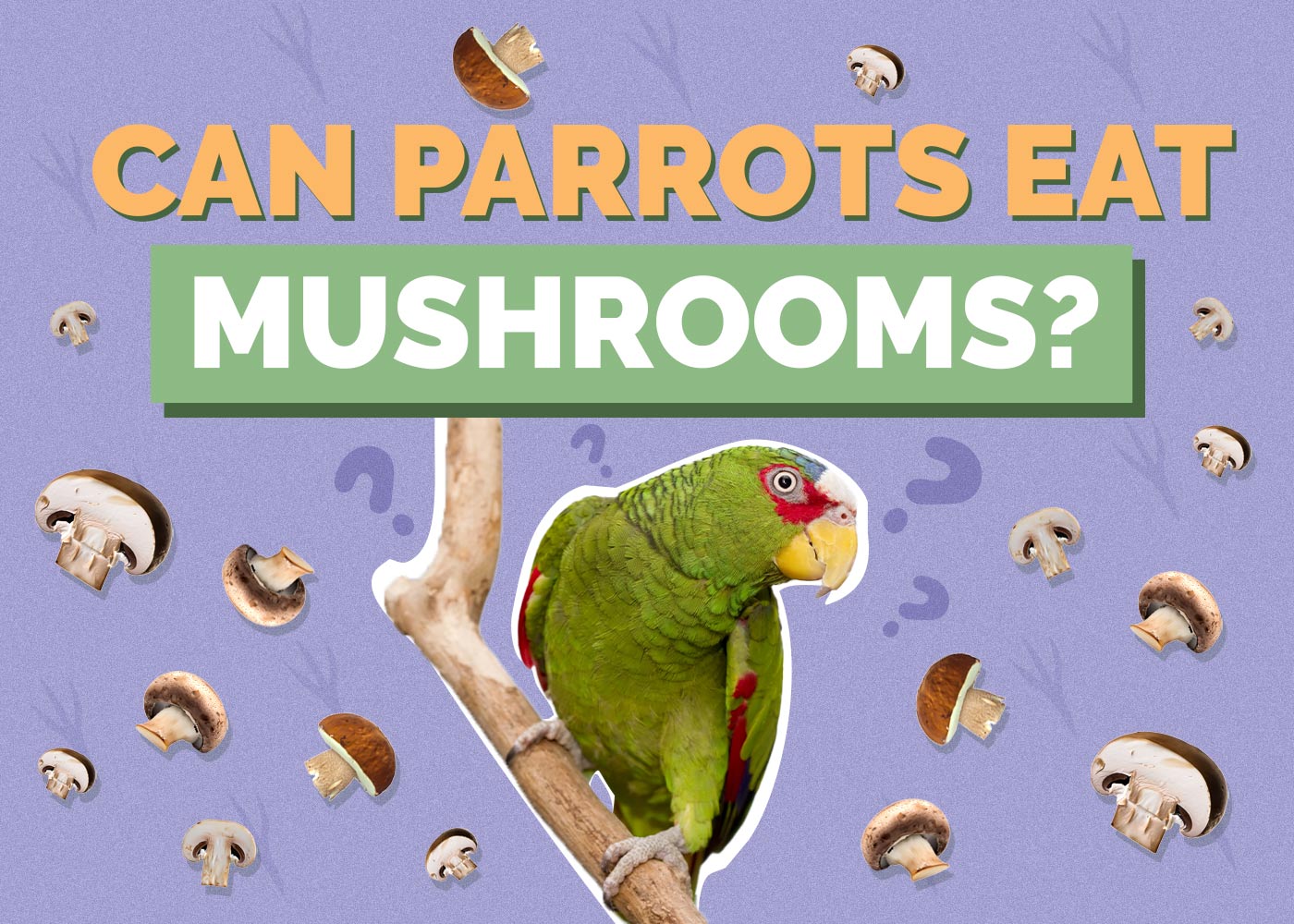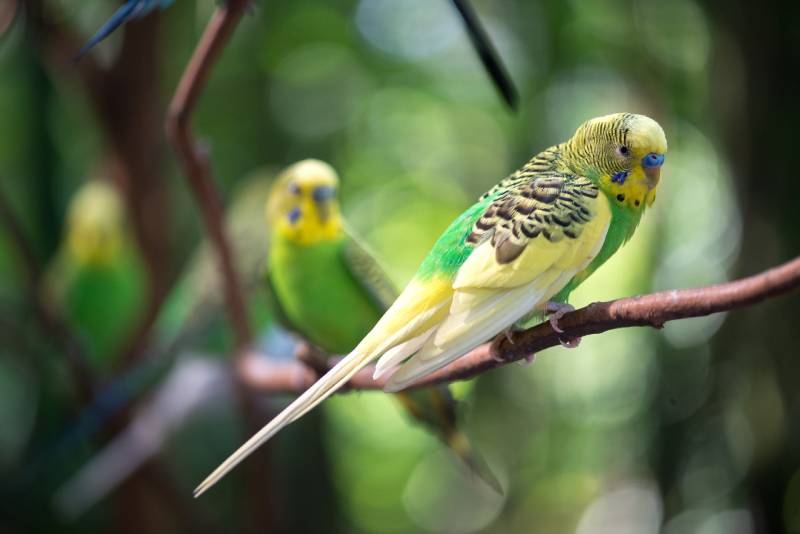Red Amazon Parrot: Pictures, Personality, Info & Care Guide
Updated on
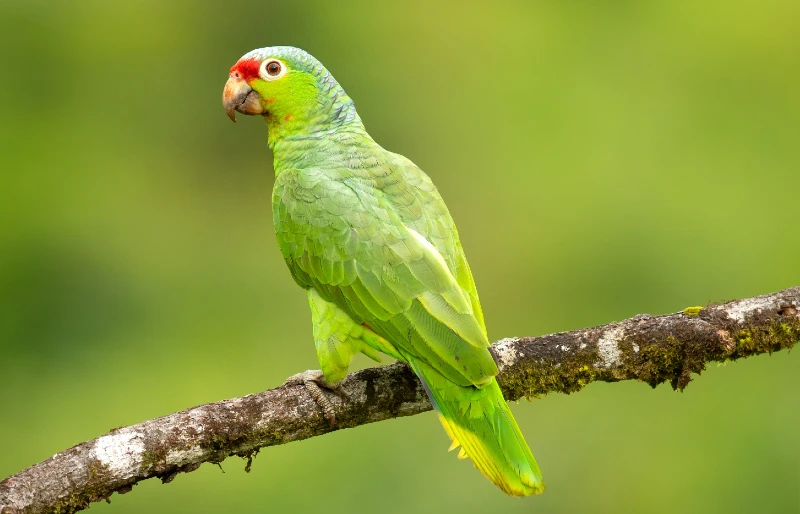
Click to Skip Ahead
The red Amazon parrot, better known as the red-lored Amazon parrot (Amazona autumnalis) , is a beautiful medium-sized bird that can be found in tropical regions from eastern Mexico to northwestern South America. These parrots are popular pets due to their beautiful plumage, and they are good talkers and affectionate birds.
Red-lored Amazon parrots can be excellent pets for the right person, but it’s essential to do your research and carefully consider if they are a good fit for you and your family. They are intelligent birds with long life spans, and require a great deal of knowledge, time and space to be properly cared for. We’ve covered the basics for you here, so please read on to find out more!
Species Overview
| Color: | Green with red markings |
| Size: | 12–14 inches |
| Weight: | 11-17 oz |
| Wingspan: | 15–17 inches |
The red-lored Amazon parrot is medium in size and is a popular species kept as a pet bird. They are currently listed as “least concern” by the IUCN Red List of Threatened Species,1 meaning their numbers are safe in the wild.
However, the population is on the decline due to the loss of habitat and poaching as part of the pet trade.
Red Amazon Parrot Characteristics
History & Natural Habitat
The red-lored Amazon was formally discovered by Swedish naturalist Carl Linnaeus, who described the parrot in the tenth edition of his Systema Naturae in 1758. They originate from parts of South America and are therefore well-adapted to a tropical habitat. They live in humid forests, mangroves, and dense woodlands. In the wild, they live in large flocks, although in the breeding season they live in pairs.
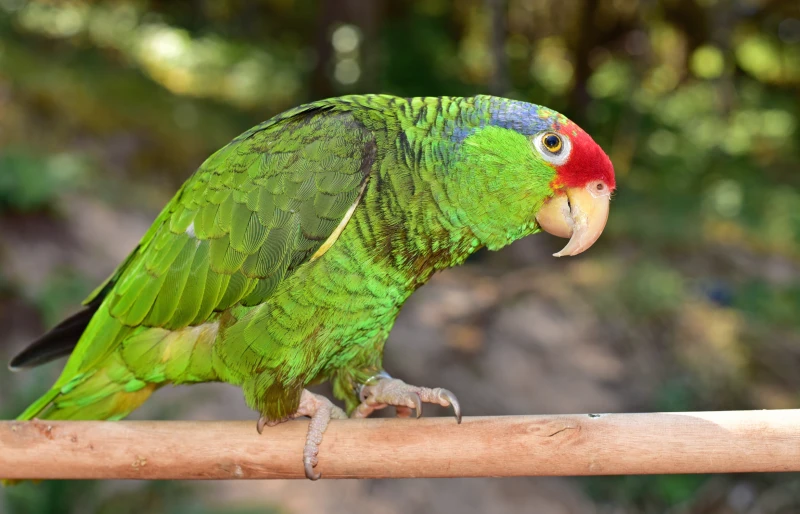
Things to Know When Owning a Red Amazon Parrot
Temperament
Other than appearance and intelligence, a major reason that red-lored Amazon parrots are popular is their temperament. These birds quickly form strong bonds with their owners and can be incredibly charming. They will love everyone in the family but do tend to form the strongest bond with one person, usually the primary caretaker. Due to their intelligence and social nature they need a huge amount of time with their owners and enrichment to be happy, on average 3-5 hours a day.
Bear in mind that like most parrot species, the red-lored can bite, though this is much less likely to occur if they have been appropriately trained from an early age. Overall, they are social and affectionate parrots that sometimes act like silly goofballs.
Just remember that these parrots might have an average lifespan of 40 years but have been known to live for up to 80 years, so they are a huge commitment!
Sounds, Speech & Vocalizations
Red-lored parrots are known for their excellent talking abilities—and their loud squawks and shrieks. Keep your neighbors in mind when considering one of these noisy birds.
They are also excellent mimics; you might find your parrot copying your cat’s meow or your neighbor’s car alarm! They will try their best to converse with you, but since they learn words and not sentences, it will likely be a rather silly conversation.
Red Amazon Parrot Appearance
The red Amazon parrot averages about 13 inches in length and has a wingspan of about 15 to 17 inches. Unlike most other parrot species, their tails are relatively short, contributing to their medium-sized appearance.
Red-Lored Amazons are bright and vivid green, with a brilliant red patch on their foreheads, which is where they get their name. They additionally have a sprinkling of blue on the top of their heads and yellow cheeks. But unlike many other bird species, the red-lored is monomorphic, which means the females and males are quite similar in appearance.
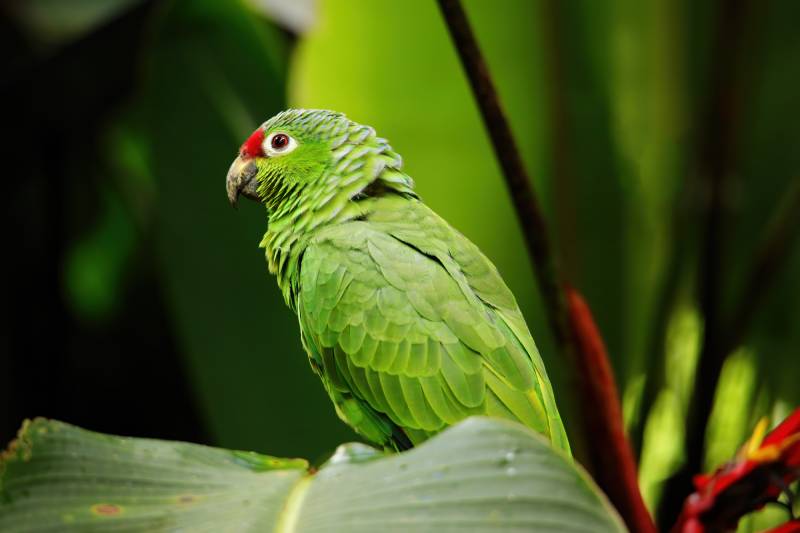
Caring for the Red Amazon Parrot
Owning a red-lored Amazon parrot is a huge time commitment. Due to their intelligence they need to be kept occupied and mentally challenged. Boredom and a lack of stimulation leads to an unhappy bird and potentially behaviors such as screaming, biting, feather plucking. The more time you spend with your parrot, the stronger your bond will be.
They are also known to love a bath! You can mist them with a spray bottle, offer a shallow water bath, or take them into the shower a couple of times a week.
Diet & Nutrition
Wild red-lored Amazon parrots eat berries, greens, fruits, nuts, seeds, and buds. Pet Amazon parrots also have a hearty appetite but are nowhere near as active as their wild counterparts and so are prone to obesity. For this reason, although they still need a varied diet, 60-80% of it should consist of high quality parrot pellets. The remainder should be a mix of vegetables, fruits, nuts and seeds.

Cage/Housing Requirements
Red-lored Amazon parrots need a spacious cage , buy the largest cage that you can afford and have space for. The cage should be 3 square feet at an absolute minimum, but the bigger, the better. They should be able to stretch their wings out to the fullest and flap them.
Square/rectangular cages that are more vertical are best, and a combination of vertical and horizontal strong bars will enable your Amazon to climb. You should ensure that there are several perches, ropes, and ladders available for climbing. A parrot play gym is a great way for your bird to enjoy time outside the cage.
The cage should be spot cleaned, the cage liner should be changed, and the food and water bowls should be cleaned daily. Every week, the cage’s tray should be cleaned (removed and cleaned with soap and water), along with the cage grate if you have one. Clean and rotate the perches and toys regularly. Monthly, the entire cage and everything inside should be thoroughly cleaned.
Exercise
Part of your parrot’s exercise will be the toys and ladders inside the cage. But much of their exercise must be outside the cage. At least 2 to 3 hours is needed to give them the necessary exercise and socialization.
They should also be given things to chew on, such as cuttlebone and other chew items designed for Amazon parrots.
Health & Conditions
All parrots are susceptible to certain health conditions, including the red-lored. The following are some of the conditions that can potentially affect the red-lored Amazon parrot.
- Psittacosis
- Aspergillosis
- Fatty liver disease
- Heart disease
- Feather plucking (can be the result of a more serious condition)
- Obesity

3 Little-Known Facts About the Red Amazon Parrot
1. They can fly incredibly fast
These birds can fly quite fast at 40 mph (64.3 kph).
2. They mate for life
It’s believed that red-lored parrots mate for life and like to spend time preening and feeding each other. While they spend most of the year flying with a large flock, they form pairs during breeding season.
3. They are noisy
These parrots love to shriek out an alert for about 10 minutes when the sun is setting, as well as first thing in the morning.
Conclusion
The red-lored Amazon parrot is a wonderful bird that is striking to look at and has a fantastic temperament. They might be stubborn and noisy and sometimes bitey, but they are also friendly, chatty, and affectionate. Do your homework and ensure that you will be able to keep up with the care demands of this intelligent, active bird – both mentally and physically.
Featured Image Credit: Milan Zygmunt, Shutterstock



